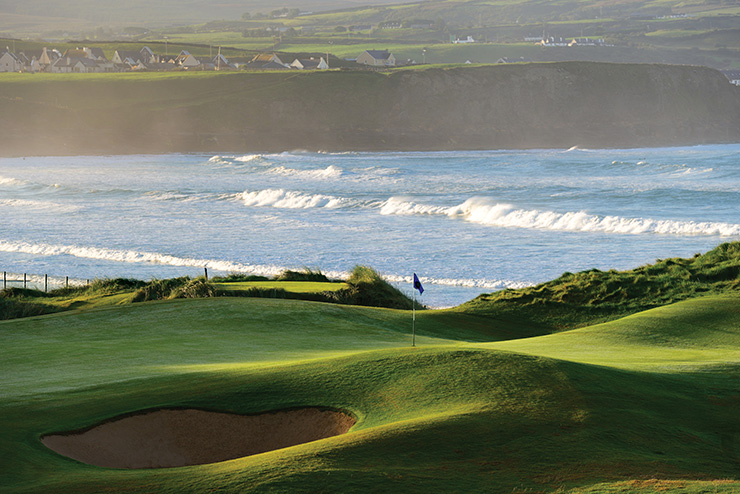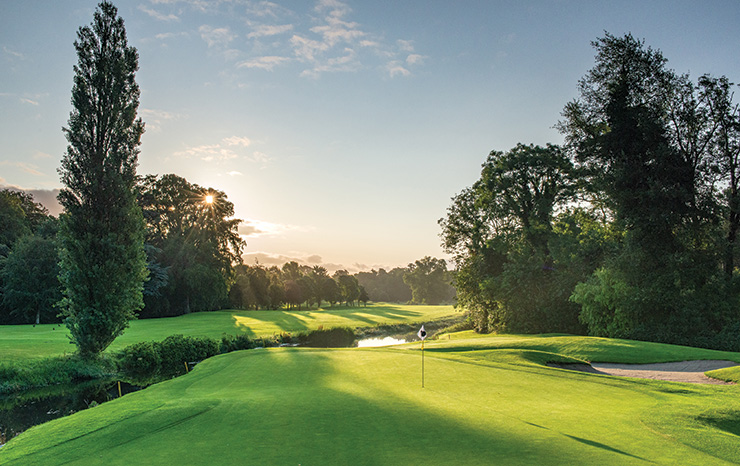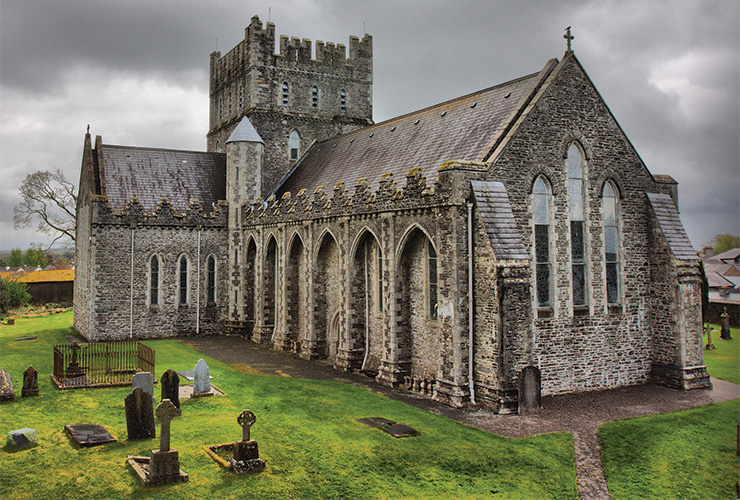Ireland has a multitude of challenging and diverse courses such as Lahinch in County Clare. Steve Carr Golf
By Matt Smith
Ireland — that small spot of green on the westernmost edge of Europe with a rich golfing heritage that has long been at the forefront of the sport.
In terms of producing some of the best players on the planet and also some of the finest courses you could ever hope to play, this is a little island that more than holds its own.
But you have to dig beneath the lush surface to get to the heart of what makes this one of the most popular golfing destinations on the globe.
Rugged coastal terrain battered by rough seas, dense green forests and mountainous valleys are the result of eons of glacial carvings and Mother Nature’s more extreme architecture.
At first glance, this may seem a foreboding place, but thanks to the combination of the elements, we now have one of the most iconic destinations to play golf in all its forms and on all terrains.
From the ‘Wild Atlantic’ links to the forested parklands of the interior and the breathtaking courses of the island’s east, Ireland simply has to be seen first-hand to attain any sort of a grasp on what makes it a unique golfing destination.
Homegrown champions such as Padraig Harrington, Graeme McDowell, Shane Lowry, Darren Clarke, Graeme McDowell, Paul McGinley and Rory McIlroy; global stars Tiger Woods, Dustin Johnson and Phil Mickelson; A-list celebrities like Samuel L Jackson, Michael Jordan and Will Ferrell: the list of advocates extolling Ireland as the finest place on Earth to play the ancient game is almost endless — and for very good and obvious reasons.
Ireland currently has more than 400 golf clubs to choose from, with a third of the world’s links and many more championship courses in some of the most spectacular surroundings, which attract more than 240,000 golfing tourists to challenge themselves on the fairways.
Golf Digest Middle East recently visited Ireland to experience five of the best the island has to offer.

Lahinch Golf Club. Steve Carr Golf
TIPS:
• Caddies are a common feature at many of the bigger clubs — and they can be a saviour when it comes to saving par and recovering a ball from the notorious rough and gorse that covers many of
the courses.
• Dress codes are strictly observed, too, with jeans, shorts and trainers a no-no at many places. A collared polo shirt and proper golf shoes will see you right, but check if a jacket and shirt are required for after-round dining.
• The popularity of courses, especially during the summer months when tourism is at its highest can mean tee times could be in demand. Always book your tee times through your operator before you travel to avoid disappointment.
• Golf hire is also readily available if you do not fancy bringing your beloved clubs on your travels amid the current travel and baggage issues at many of Europe’s airports. Check in advance.
• The 19th hole: A staple of any round of golf in Ireland is the warm welcome everyone receives after a round, with drinks, hearty food and the traditional ‘craic’ on offer to warm you up if the notorious weather paid a visit to the course.
[divider] [/divider]
K Club
Straffan, Co Kildare
North Course: 18 holes, par 72, 7,350 yards
South Course: 18 holes, par 72, 7,277 yards
Famous Competitions:
• Ryder Cup (2006)
• Smurfit European Open (1996-2007)
• Irish Open (2016)

Kevin Markham
Our journey begins at the location of one Ireland’s most famous occasions on the global stage — the K Club.
Set in the County Kildare countryside, the K Club is home to two Arnold Palmer-designed courses and regarded as one of Ireland’s most challenging parkland set-ups, whether you are on the 18 holes of the North or South courses.
The more famous North Course was home to the historic 2006 Ryder Cup, one of the most one-sided events in the event’s history and is regarded as one of Palmer’s masterpieces.
From the first tee, you are instantly steeped in the course’s history and tradition as the trees loom large on both sides along with one of its recurring features — and dangers — the water.
Palmer intentionally re-routed the famous River Liffey through as many holes as possible, with the river snaking through the course and feeding as many as 15 lakes and ponds, while the strategic, sometimes deep bunkers are waiting to snaffle any other wayward drives and approach shots. The large undulating greens offer a little respite by way of a generous target to aim for.
It could be easy to become overawed in such surroundings, but with the spectacular scenery and wildlife to help you take your mind off that last bad shot, this course is surprisingly fair if you choose the tees appropriate to your game and it is well worth the five-star experience.

David Cannon
Risk-and-reward shots are there to tempt you on most holes and the closing stretch will stay long in the memory, with the 16th and 17 consistently ranked among the best in Ireland, before the approach to the clubhouse to close out your round.
The South Course opened in 2003 is a very different experience, but is often hailed in its own right as a links-heathland hybrid with narrow corridor fairways and — again —water is a regular feature. The famous par-5 7th hole is a sight to behold.
Away from the golf there are plenty other activities on the 550-acre Straffan Estate alongside the luxury five-star hotel, with fishing (thank you Liffey), clay shooting and horse riding all available, alongside endless nature trails and cycling routes.
WHERE TO STAY:
K Club
Look no further than the K Club itself for the tip-top in accommodation with the full five-star experience in the ancient manor. Old-school hospitality with a touch of class is the order of the day, with facilities including a spa, gymnasium and a splash of elegance with drawing rooms and cocktail bars overlooking the grounds. kclub.ie
ALSO SEE:
St Brigid’s Cathedral
At the heart of the ‘Ancient East’ of Ireland is Kildare’s St Brigid’s Cathedral (below), a fifth-century nunnery that has undergone many renovations, offering visitors a glimpse into the past from 16th-century vaults to ancient architecture and artefacts. The famous 108ft Round Tower affords panoramic views of the surrounding area from the highest point in Kildare.

St Brigid’s Cathedral: Dan MacKin/Flickr
Bog of Allen Nature Centre
An informative destination for all to discover the history behind the fuel that powered Ireland for more than 10,000 years — peat. An eye-opening walk through time, the centre has nature trails, plus interactive and educational features for kids of all ages, whom can discover how these fascinating boglands are being preserved for future generations. Activities include pond dipping, nature crafts, frog and creepy-crawly hunts, bog walk, museum and gardens.
A Week In Ireland
DAY 1: The K Club
DAY 2: Lahinch Golf Club
DAY 3: Dromoland Castle
DAY 4: Mount Juliet Estate
DAY 5: Druids Heath









